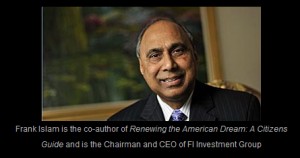
Nearly two years after getting out of a painful recession, the US economy continues to stutter along. Though multiple indicators have suggested that the recovery is real-the world’s largest economy has registered an average growth rate of 2.8 per cent per quarter over seven quarters-the recovery is yet to be felt on the Main Street, USA.
Middle-class Americans, who bore the brunt of the worst recession since the Great Depression, are still struggling financially. Many are still unemployed, or underemployed.
By any measure or yardstick, the current recovery is a soft rebound, characterized by an anaemic growth rate, a reluctance on the part of consumers and companies to spend, a lack of adequate job creation, and a housing market that has still not bottomed out. Since the official end of the downturn in the summer of 2009, in only one quarter has the growth rate touched 5 per cent. In three quarters, it was 1.8 percent or less, hardly impressive for an economy rebounding from a debilitating downturn.
By all accounts, the soft underbellies of the post-recession US economy are the fragile housing and job markets. A series of new data related to these two fields released in the past few weeks underline that fact.
Late last month, Standard & Poor’s revealed that home prices in the country had fallen 4.2 per cent in the first quarter of 2011. Alarmingly, housing prices fell in 18 of the 20 largest metropolitan markets, and in most of these places homes now cost less than they did even during the recession.
The S&P survey came close on the heels of a National Association of Realtors (NAR) study, which found that pending home sales fell sharply in April after two monthly gains, implying a slower-than-expected recovery in the upcoming months.
The Pending Home Sales Index, a forward-looking indicator based on contract signings, dropped 11.6 per cent to 81.9 in April from a downwardly revised 92.6 in March. Poor home sales may be in part due to severe weather conditions in several southern states, which were affected by tornadoes and rising gas prices. But it is clear that the free fall of the housing market has not been reversed.
The housing data is especially important since housing is one of the sectors that have become an obstacle to robust economic growth in America. As has been well-documented, one of the triggers for the Great Recession was the collapse of the housing market. Its stabilization is critical to the rebound, as financial institutions as well as consumers have huge stakes in the sector.
The weak job market is the second area of concern for the US economy. Though its fortunes has considerably improved, many businesses, both big and small, are simply not ready to go on a hiring spree, with the memory of the recession and layoffs still fresh in their mind.
In April, the economy added close to a quarter million jobs, not enough to make a real impact on a job market that shed more than 8 million jobs during the recession. In April, unemployment increased to 9 per cent, from 8.8 per cent in March. The peak unemployment rate after the recession began in December 2007 was 10.1 per cent, recorded in October 2009.
Inadequate job creation is one of the reasons unemployment remains at unacceptable levels. At the current rate of employment generation, it could be four to years before the unemployment rate returns to the 5-6 per cent range.
Meanwhile, new Labor Department figures revealed that jobless claims also increased at a more-than-expected rate. In the week ended May 21, some 424,000 people filed for unemployment insurance, 10,000 more applications than the previous week.
What all these figures suggest is that the labour market is still struggling to gain momentum despite US Fed officials’ recent claim that the economic recovery was proceeding at a moderate pace and that overall conditions in the labour market were gradually improving.
In the minutes of their April 26-27 meeting released a few days ago, the officials said the labour market “continued to improve, albeit gradually,” even though “the unemployment rate remains elevated”.
On the spending front-a third weak spot in the economy-personal consumption expenditure was soft in April, increasing just 0.4 per cent, following a rise of 0.5 per cent in March and 0.8 per cent in February. Spending, which accounts for about two-thirds of economic activity, was hit by high food and gasoline prices, as well as supply-chain interruptions triggered by the recent tsunami in Japan.
Not surprisingly, subpar shows in several critical areas are not doing consumer confidence any good. The Conference Board’s Consumer Confidence Index fell to 60.8 last month, a 5-point fall from April and the lowest in five months. The Conference Board is a business membership and research association.
The next few months are going to be very important for President Obama and his economic team, as they campaign for re-election in November 2012. In all probability, the economy will be the number one poll issue, and their priority will no doubt be to turn the soft rebound into a real bounce.
The administration’s tasks are well cut out for them: reversing the housing market’s slide, enhancing the pace of job creation and putting money into the wallets of American consumers so that they can spend.
For the US economy to regain its footing, it needs to fire on all cylinders. That requires the stabilization of the housing market, creation of jobs-not in hundreds of thousands, but in millions-and increased spending by American consumers.
(Global India Newswire)